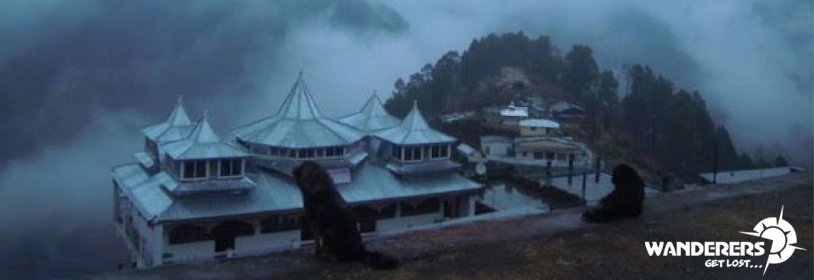
Har ki Dun trek is situated in the Govind Wildlife Sanctuary & National Park in Garhwal Himalayas. It is a valley trek and can be done by 12+ year old's. It is one of our all-time favorite treks in Uttarakhand's Garhwal Himalayas, with endless lush meadows, snow-capped peaks and wild alpine gardens.
If you add an additional day in the itinerary, you can have a short trip to Maninda taal from the left of the valley. It is a 3kms trek with rewarding views. For trekkers who want to do a challenging excursion, you can take the right from the valley and trek towards Jaundhar glacier. It would be a long trek of 9kms (one-way) so make sure to start early to make it as close as possible to the glacier and return by evening.
The Har Ki Dun valley is at an altitude of 11,800 feet above sea level. It is connected to Baspa Valley by the Borasu Pass. For trekkers who love to see flowers there are a few patches towards Kalkatiya dhar where you can spot them. Being in the National park, this valley is home to some wild animals as the Himalayan boar, leopards and bears. Due to a large number of trekkers footfall, this area remains busy and crowded due to which spotting them is very rare. Birds as the Himalayan Monal can spotted occasionally.
Sankri also serves as a base location for trek like Kedarkantha Trek. Other moderate level treks would be, Buran Ghati Trek, Hampta Pass Trek or Kashmir Great Lakes Trek.
Day 1 – Drive from Dehradun to Sankri (210kms/ 8 – 9hrs)
Reach the Dehradun railway station by 06.30am and assemble. We freshen-up and have a glass of hot tea right outside the railway station. We start the drive from Dehradun railway station by 7am. On reaching Kempti falls we can have breakfast. The drive from Kempti falls onwards will be the typical mountain roads. On to our left we will have the tons river flowing. We cross Nain bagh, Naugaun and Morri to reach Purola by 1.30pm. We have lunch here and push for Sankri. Purola is the last town where we have ATMs. Having mentioned that, it would be good to manage cash from Dehradun itself. We cross Naitwar and the forest check post to enter the "Govind National Park". From here it takes us about 40 to 45 mins to get to Sankri. We should reach Sankri by 4.30pm and check into the rooms.
At around 7pm we have a team briefing with soup in which we get to know each other better. We will share the plan of the trek in terms of routes, evacuation strategies, picture moments and more.
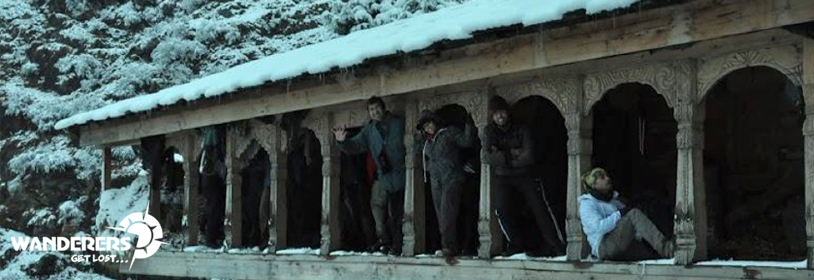
Day 2 – Drive from Sankri to Taluka (11kms/ 1hour), Trek from Taluka to Gangaad (9kms/5 hrs)
After breakfast, a 45mins drive will take us to Taluka the starting point of the trek. This is a 11 kms road drive. Generally, in the early winters (first 2 weeks in Dec) the road journey gets disturbed due to snowfall. Due to this the vehicle does not go beyond a certain point. That point is at a walking distance to the starting point of the trek. That is why we need to start the day by 8 am from Sankri. On reaching Taluka, we get to see the forest official signs in red and green mentioning Har ki Dun – 27 kms (one way). Trek along the Rupin nalla (river) on the left side towards the first campsite Gangaad. Gangaad has some decent homestays, one of them is known as "Yes boss". We plan to spend the night here.
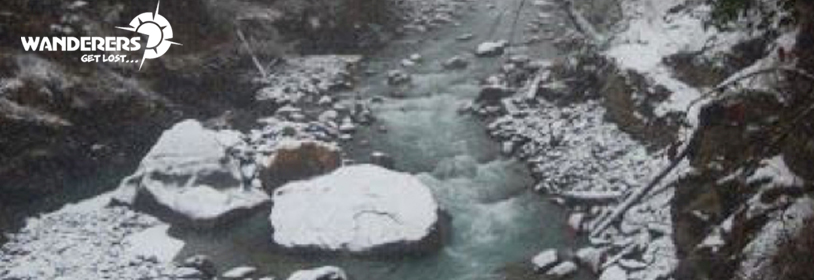
Day 3 – Gangaad to Kalkatiya dhar/Seematra (8kms or 12kms/4-5hrs or 6-7hrs)
Today's trek is very scenic and we reach to a camping site called Puani garat/ Chiloor gadh. Puani garat means wheat mill by the running water source, puani – water, garaat – make. We walk straight towards Seema village. On the left ridge we can see the Osla village, which we shall be visiting on our return. After seema, we take the cemented bridge on our left and enter into the Har kin dun Valley. Now, the river is on our right and here onwards this is termed as the Har ki dun nala (river). If we cross towards the right side, we get to the Ruinsara tal and Bali pass route. From Seema we reach the land where the villagers from Osla and Seema have their crops harvested. We can see step farming being practiced on the left side of our walk. Another hour of walk and we reach Kalkatiya dhar campsite. If we have water sources available we camp for the night here in Kalkatiya dhar. If not, we ascend from kalkatiya dhar on the ridge that turns left into the Har ki dun Valley. Another 30 mins trek from here and you reach Seematra campsite. In either of these of places, water will be available.
Day 4 – Kalkatiya dhar/ Seematra to Har ki Dun (8kms or 6kms/5-6hrs or 3-4hrs)
We start early today by 8am. The starting of the route has some descends and a couple of interesting waterfalls. In winters, the main waterfall is generally frozen and is a spectaclular sight. After descending, you see a camping area on the right side which is called a Baslau. Cross Baslau and trek for about over an hour and reach the Har ki dun campsite.
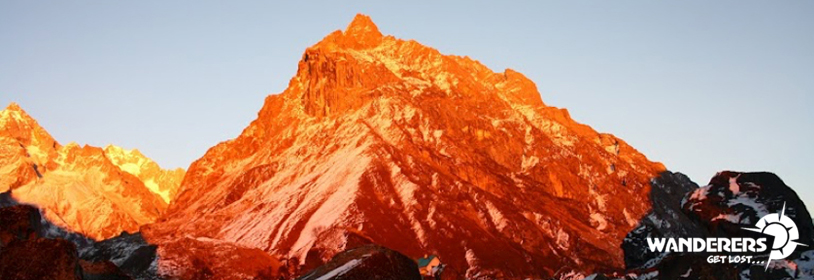
Day 5 – Explore Har Ki Dun – Maninda tal (6kms/4hrs)/ Jaundhaar glacier (18kms/ 7-8hrs)
Today could be utilized as a rest day. For a short hike, take the left ridge and climb for approx 3 kms to a lake called Maninda tal. Spend some time there and return. Otherwise if we take the right side over the Har ki dun valley we can trek for approx 9 kms to reach Jaundhaar glacier. To and fro to Jaundhaar glacier from Har ki dun would be a long and exerting walk. It involves steep ascends and long valley walks. We prefer going till the Maninda tal and returning than attempting Jaundhaar glacier.
Day 6 – HKD to Osla (15kms/ 7-8 hrs)
Today's trek is long in terms of distance and involves a lot of steep descends. We retrace our steps all the way till kalkatiyaa dhar and stay on the right ridge to get to Osla village. This is the largest village on the entire route. We see many locals grazing their sheeps, goats, cows and buffaloes. There are many homestays available in Osla. Osla has very old and an ancient temple that was built in the 13th century (as per the locals). The locals state that this was built durng the Pandava's times, when they were taking this route to enter the gates of heaven via the famous Swargarohini peaks. Saumeshwar devta - a form of Lord Shiva is worshiped in this temple. The sculptures and designs of this temple along with some houses of this village take us back in time. Some locals also believe that this used to be a Duryoyodhna temple until a few decades ago and recently Saumeshwar devta has come and taken place here. There is no way to cross-check these facts but there are many more folklores from this village.
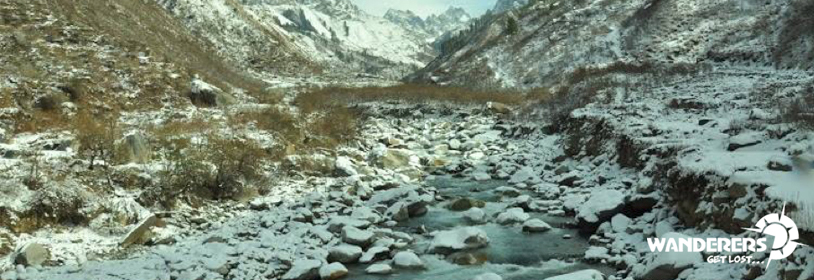
Day 7 – Osla to taluka (12kms/ 6-7hrs) to Sankri (11kms drive/ 1hour)
Start from Osla by 7am so that we can reach Sankri by early evening. Cross the bridge after a steep descend of about an 45 mins to get to paani garaat. Retrace the route to Gangaad, Bhidaaka and get to Taluka. Have packed Lunch at Bhidakaa. From Bhidakaa it would take about an hour and a half to reach to Taluka. We take the vehicle back to Sankri and relax for the rext of the evening.
Day 8 – Drive from Sankri to Dehradun (220kms/ 7 – 8hrs)
We leave from Sankri by 7 am so that we reach Dehradun by 4 pm at max. Take a drop straight to the railway station. If we have some time to kill in Dehradun, enjoy a meal at Doon Darbar (for non-vegetarian food).
Altitudes:
Sankri – 6440 feet – Taluka – 8700 feet – Gangaad 8200 feet – Kalkatiya dhar – 8960 feet – Har ki dun – 11,800 feet – Maninda taal – 12,100 feet
Inclusions:
1) Transport - Innova (or similar) car for travel from Dehradun to Sankri.
2) Meals - All the meals from Sankri to Sankri. Customizable meal menu with both veg and non-veg food options (based on availability).
3) Accommodation -
- 1st night and 7th night in a good quality hotel in Sankri on twin sharing basis.
- Camping while on trek on twin sharing basis.
- While camping, wanderers will provide: dry cleaned sleeping bags and mattresses with fresh individual fleece liner for hygiene.
- Toilets – clean and hygienic (traditional cat pit style).
- Camping chairs and tables at the campsite.
4) Trek Leader - An experienced mountaineer who is also a certified wilderness first aid responder will be provided.
5) Guide - There will be a well experienced local guide who is well versed with the local topography.
6) Camping & trekking permits and permissions from the local administrations/ authorities.
7) Equipments (if required) can be rented from Wanderers.
8) Offloading the rucksack - 1 bag per trekker (less than 15 Kgs).
Exclusions:
1) Any meals/services not mentioned above
2) Any costs in accommodation & food arising out of unforeseen circumstances like landslides, road blocks, bad weather, etc.
3) Insurance
4) Alcohol, soft drinks, beverages, etc.
5) Personal expenses like tips, telephone calls, laundry, etc.
6) Any charges for video cameras, still cameras, etc.
